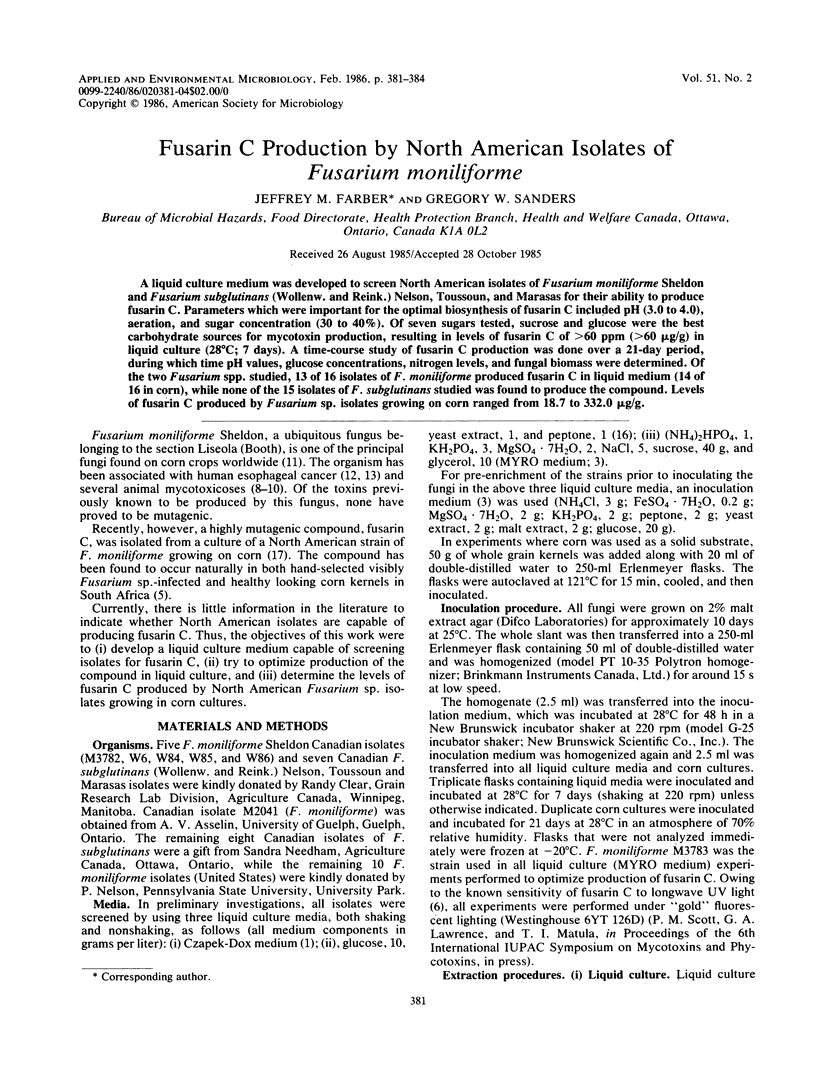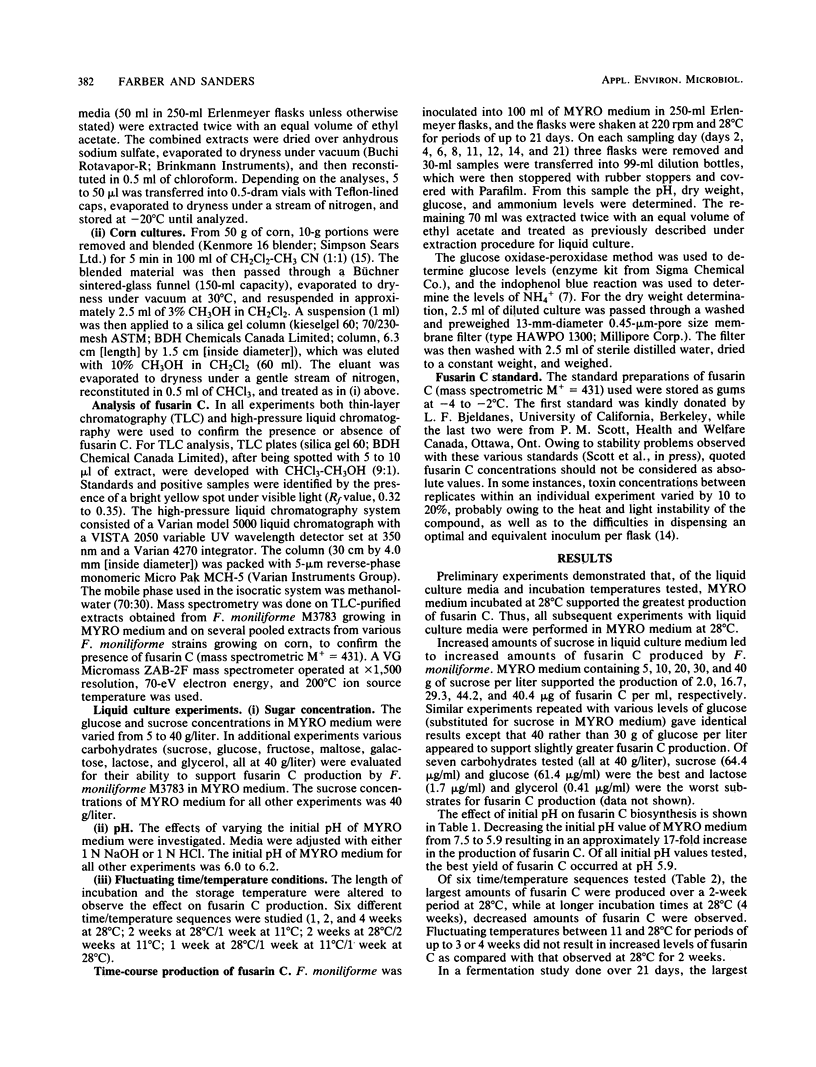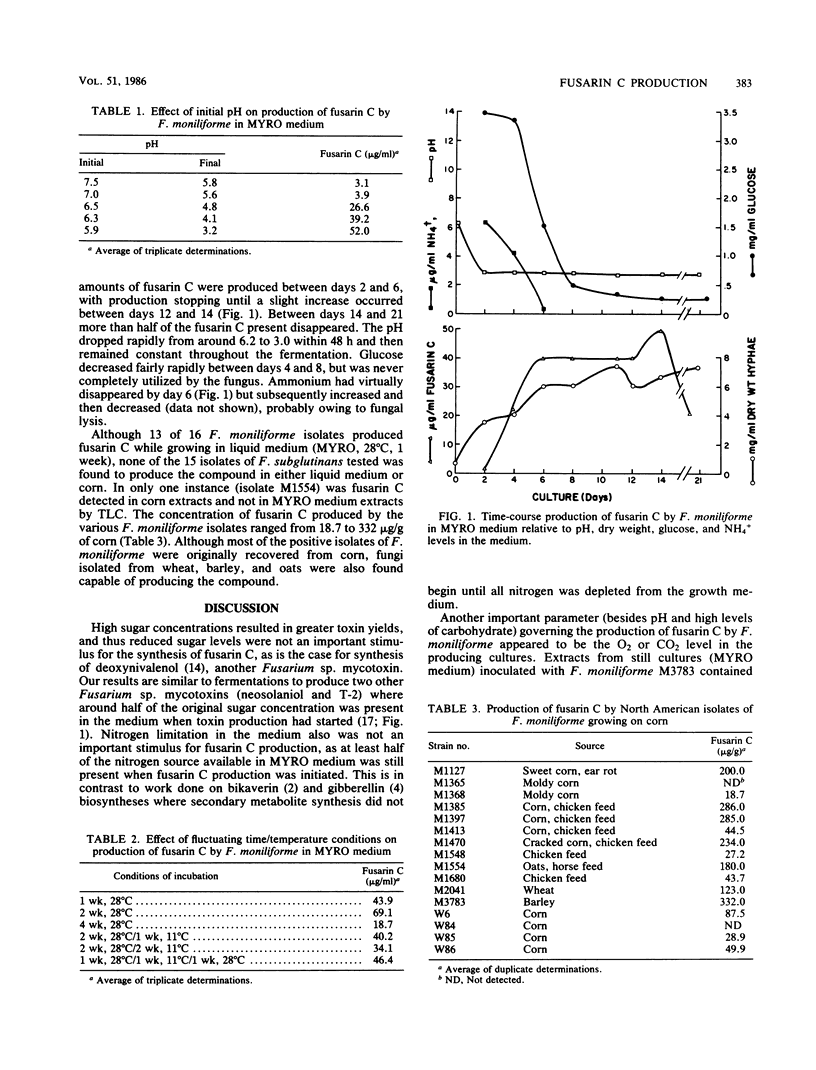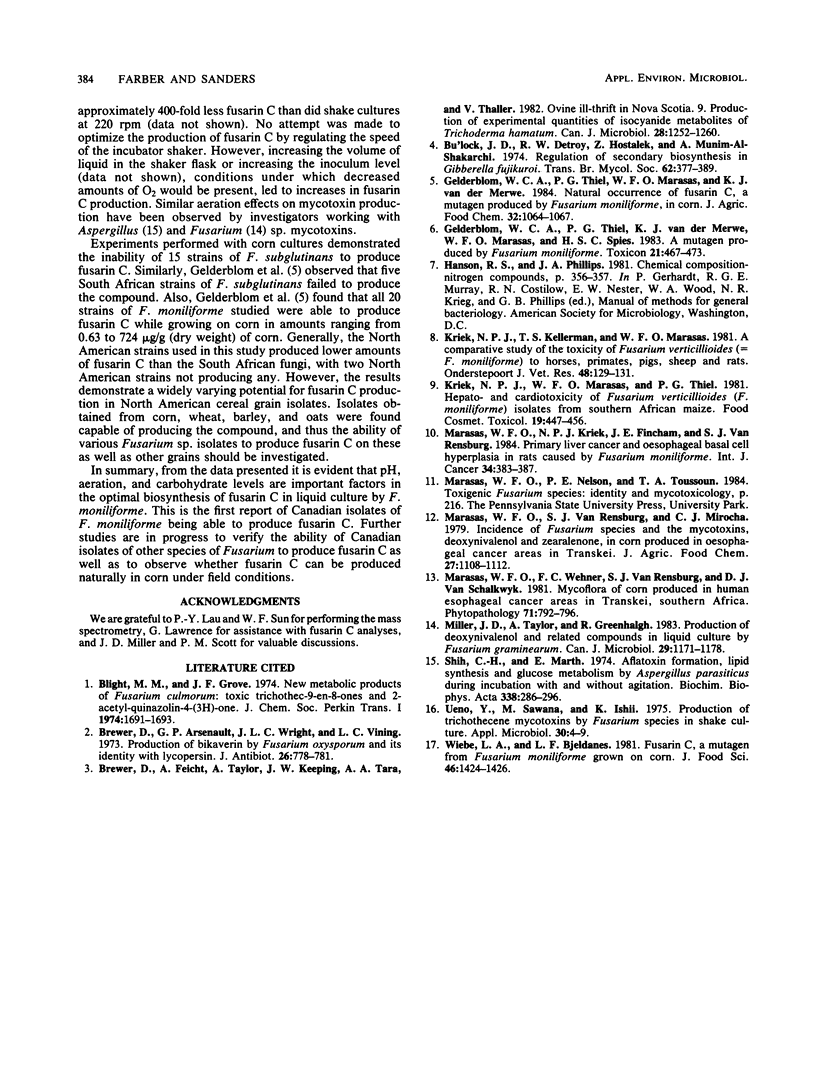Abstract
A liquid culture medium was developed to screen North American isolates of Fusarium moniliforme Sheldon and Fusarium subglutinans (Wollenw. and Reink.) Nelson, Toussoun, and Marasas for their ability to produce fusarin C. Parameters which were important for the optimal biosynthesis of fusarin C included pH (3.0 to 4.0), aeration, and sugar concentration (30 to 40%). Of seven sugars tested, sucrose and glucose were the best carbohydrate sources for mycotoxin production, resulting in levels of fusarin C of greater than 60 ppm (greater than 60 micrograms/g) in liquid culture (28 degrees C; 7 days). A time-course study of fusarin C production was done over a 21-day period, during which time pH values, glucose concentrations, nitrogen levels, and fungal biomass were determined. Of the two Fusarium spp. studied, 13 of 16 isolates of F. moniliforme produced fusarin C in liquid medium (14 of 16 in corn), while none of the 15 isolates of F. subglutinans studied was found to produce the compound. Levels of fusarin C produced by Fusarium sp. isolates growing on corn ranged from 18.7 to 332.0 micrograms/g.
Full text
PDF



Selected References
These references are in PubMed. This may not be the complete list of references from this article.
- Blight M. M., Grove J. F. New metabolic products of Fusarium culmorum: toxic trichothec-9-en-8-ones and 2-acetylquinazolin-4(3h)-one. J Chem Soc Perkin 1. 1974;0(14):1691–1693. [PubMed] [Google Scholar]
- Brewer D., Feicht A., Taylor A., Keeping J. W., Taha A. A., Thaller V. Ovine ill-thrift in Nova Scotia. 9. Production of experimental quantities of isocyanide metabolites of Trichoderma hamatum. Can J Microbiol. 1982 Nov;28(11):1252–1260. doi: 10.1139/m82-186. [DOI] [PubMed] [Google Scholar]
- Gelderblom W. C., Thiel P. G., van der Merwe K. J., Marasas W. F., Spies H. S. A mutagen produced by Fusarium moniliforme. Toxicon. 1983;21(4):467–473. doi: 10.1016/0041-0101(83)90124-1. [DOI] [PubMed] [Google Scholar]
- Kriek N. P., Kellerman T. S., Marasas W. F. A comparative study of the toxicity of Fusarium verticillioides (= F. moniliforme) to horses, primates, pigs, sheep and rats. Onderstepoort J Vet Res. 1981 Jun;48(2):129–131. [PubMed] [Google Scholar]
- Kriek N. P., Marasas W. F., Thiel P. G. Hepato- and cardiotoxicity of Fusarium verticillioides (F. moniliforme) isolates from Southern African maize. Food Cosmet Toxicol. 1981 Aug;19(4):447–456. doi: 10.1016/0015-6264(81)90449-1. [DOI] [PubMed] [Google Scholar]
- Marasas W. F., Kriek N. P., Fincham J. E., van Rensburg S. J. Primary liver cancer and oesophageal basal cell hyperplasia in rats caused by Fusarium moniliforme. Int J Cancer. 1984 Sep 15;34(3):383–387. doi: 10.1002/ijc.2910340315. [DOI] [PubMed] [Google Scholar]
- Marasas W. F., van Rensburg S. J., Mirocha C. J. Incidence of Fusarium species and the mycotoxins, deoxynivalenol and zearalenone, in corn produced in esophageal cancer areas in Transkei. J Agric Food Chem. 1979 Sep-Oct;27(5):1108–1112. doi: 10.1021/jf60225a013. [DOI] [PubMed] [Google Scholar]
- Ueno Y., Sawano M., Ishii K. Production of trichothecene mycotoxins by Fusarium species in shake culture. Appl Microbiol. 1975 Jul;30(1):4–9. doi: 10.1128/am.30.1.4-9.1975. [DOI] [PMC free article] [PubMed] [Google Scholar]


